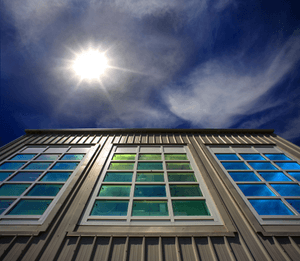Energy efficiency improvement measures
Measures to reduce energy consumption, and reduce associated energy costs

“Energy-Efficient Windows: Technologies for the Future” by Berkeley Lab is licensed under CC BY-NC-ND 2.0.
Implementing energy efficiency measures is a common adaptive response to decarbonisation policy for actors at local, regional and national levels. Energy efficiency measures include insulating walls and roofs, replacing doors and windows, upgrading lighting, appliances and machinery, and more. When accompanied by technologies such as onsite solar, energy efficiency can be transformative as it can completely reshape behaviours, habits and energy needs.
Governments and companies often adopt energy efficiency strategies to reduce energy demand within their buildings and operations. This is driven by both policy and economic considerations. Individuals and homeowners also undertake energy efficiency measures for both environmental and economic reasons, albeit at a much smaller scale.
Energy efficiency measures are more prominent in middle transition stages as people become more aware of the need for reduced energy use, or as government policies supporting energy efficiency are introduced. However, energy efficiency can take place at any point if actors are self-motivated to reduce their energy costs.


Funding
The CINTRAN project has received funding from the European Union’s Horizon 2020 research and innovation programme under grant agreement No. 884539. The sole responsibility for the content of this website lies with the authors and does not necessarily reflect the opinion of CINEA or other EU agencies or bodies.